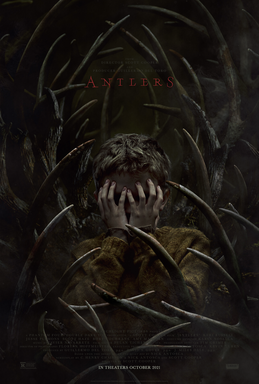The thing about monsters is once they’re released they go wild. Antlers is sometimes criticized for cultural appropriation—it takes the wendigo, an American Indian monster, and uses it in an Anglo story. There’s perhaps some truth to that, but the wendigo is the perfect monster for the social commentary the film makes about the poor. Those who’ve never been poor can’t really understand, and I can’t blame them for it. Pointing fingers at symptoms like drug abuse is pretty typical. It’s not directing the extinguisher at the base of the fire, but at the dancing flames that keep shifting as the base consumes. In short, I found it a powerful movie, and one that is beautifully filmed. Yes, it does lift an American Indian monster, but that monster was released long ago.

The wendigo was addressed by Algernon Blackwood in his 1910 story that goes by that name. It has appeared in other horror venues as well. Antlers is the first full-fledged horror movie I’ve seen to use it and it builds the story up nicely. And it does so by tying religion into the narrative. In brief, Lucas Weaver, a twelve-year old, is protecting his father and younger brother. After being attacked by a wendigo, his father has become one. Lucas’ teacher, Julia Meadows, was abused as a child and recognizes it in Lucas. She become determined to care for him but his father has given over to the spirit of starvation that inhabits him.
I could’ve used this in Holy Horror because when Julia is searching Lucas’ desk at school she finds, among other things, a Bible. At one point Lucas’ brother asks if God is dead. His father has told him that he is. And when the police are trying to determine what they’re up against, the former sheriff, an American Indian, tells them about the wendigo. Native beliefs are treated as superstitions, of course. The wendigo is brought out because of cannibalism. The use of a native monster and the role of the landscape in the film make this a fine example of folk horror. And it’s a cautionary tale about the dangers of abandoning the poor. Those who criticize the film for that have perhaps lost sight of the monster. Monsters belong to everyone. The golem, the wendigo, the mummy—these all play a role in someone’s religion and culture. They also serve to haunt anyone who’s concerned with fairness and justice. And that’s why we must chase any monster that roams free.
